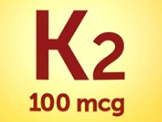Seawater Into Drinking Water Using Solar Power
Clean and safe water is one of the world's greatest environmental problems. Bad water supply heightens the rate of water-borne diseases in developing countries. According to statistics, one in three people does not have adequate access to clean and healthy water.
The statistics were released by WHO and UNICEF in 2019. The pandemic made the situation worse. It is more of an economic issue than an environmental one at the moment. However, in Chile, an architectural design student may have found a solution to the country's poor water supply. He created a skylight that produces a clean eater with the use of light energy.
He has shared his technical know-how with the Chilean people so they can manufacture their skylights with crude materials. The Solar machine evaporates seawater using heat from the sun. The seawater moves through a pipe into the bowl-shaped skylight. The high salt level and other harmful impurities are filtered at the base of the skylight. The brine from the extraction serves to power the machine at night in the absence of sun.
Henry discovered that every day, 10 families moved to the rocky rural areas due to the privatization of the economy. The master’s student’s design now serves the community in Chile. On other continents, desalination plants, which convert seawater to efficient drinking water, have been in existence since 1950. It is prevalent in the middle east and other tropical regions.
The technology has provided for the people, but the cost is reaching its brink. This is since it is powered by oil and other crude gasses. It is detrimental to the environment and large-scale use of fossil fuels. Water is the most geometrically demanding natural resource. In the Middle East and North Africa, there is a huge gap between the demand and supply of water.
Since the 21st century, researchers and engineers in the middle east have been scaling out possible means to clean water without micro destruction of the environment. Finally, the solar-powered desalination machine was introduced in the large city of Neom. The city is 33 times larger than New York City. The red sea will be the major water supply for the machine. The greenhouse structure is powered by a field of mirrors that absorbs sunlight up to 50 times. This speeds up the evaporation time.
The process is somewhat like the skylight structure. The process can also be used to set desertification and promote reforestation.
However, the cost of this operation is magnanimous. The business value of the greenhouse desalination machine soars to about $51 million after every five years. In other news, other regions of Kenya suffer from salty and contaminated water. A non-profit, Give Power, had donated a solar-powered desalination machine. The machine, which was mounted in the Kiunga area in July 2018, can produce over 19,800 gallons of water every day for the locals.
Due to a lack of efficient water supply, the locals must use all water to bathe, cook and perform other household chores. Children, especially girls, are kept out of school. They spend their time fetching water rather than being in the classroom.
However, the founder of the non-profit hopes to upscale the production of the desalination machine to other areas of the country and the world.
Reference
● businessinside.com
● brinknews.com







